22.01.2024
"There is an inevitable tension in Mars sample return and the search for life."
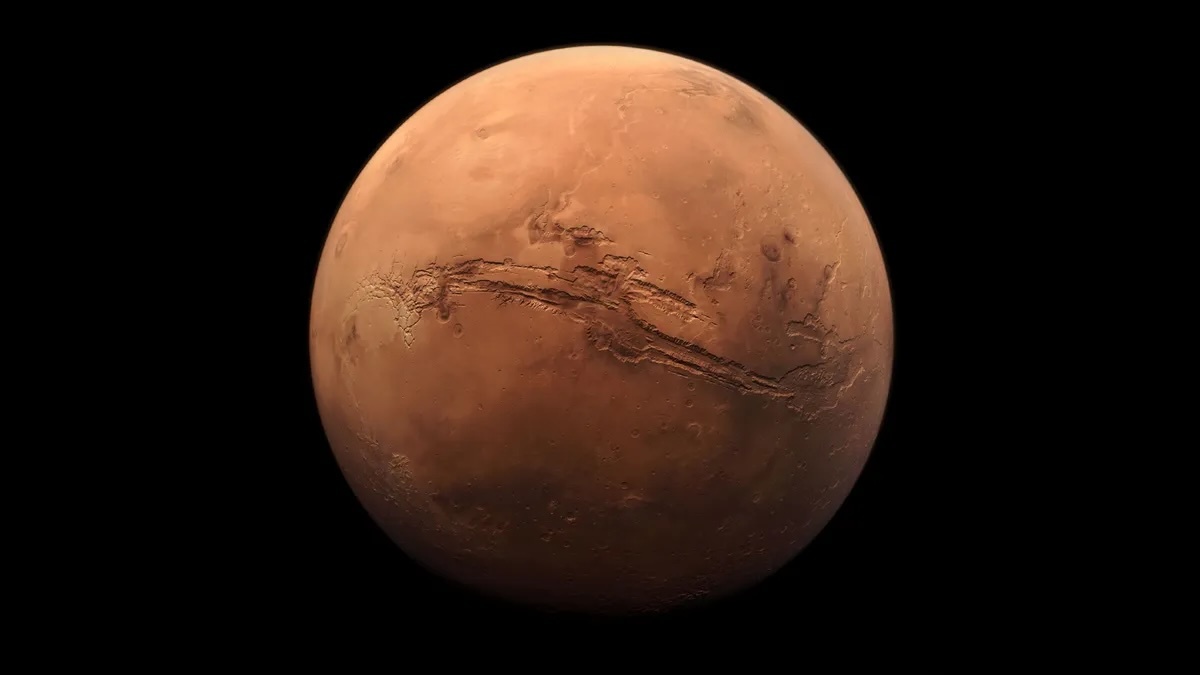
Mars holds tight its secrets, including the prospect of being a present-day abode for life. (Image credit: NASA)
While the clamoring to bring bits and pieces of Mars back to Earth for intensive study continues, scientists are also devising instruments and techniques that can be sent to the Red Planet to perform on-the-spot probes for life. Could these low-cost approaches usurp the early need for samples shot directly from Mars?
That option brings to mind the comment from Marcel Proust — a French novelist, literary critic, and essayist who wrote the novel In Search of Lost Time: "The real voyage of discovery consists not in seeking new landscapes, but in having new eyes." For the discovery of prior life on Mars, a sample returnprogram would work best, but if we want to discover present-day life on the Red Planet, doing so with instruments right there on Mars is the way to go.
That's the view of Dirk Schulze-Makuch, a professor for astrobiology and planetary habitability at the Technical University Berlin in Germany. Additionally, he thinks currently available methodologies are suitable and far enough developed to determine whether there is life on Mars.
Enigmatic chemical activity
Schulze-Makuch points back in time to the dual NASA Viking lander missions in the 1970s. It was a heady time for trying to answer a provocative question: Is Mars an abode for life?
While biology experiments detected unexpected and enigmatic chemical activity in the Martian soil, a majority of Viking Mars investigators leaned toward no clear, slam dunk proof for the presence of living microorganisms in soil near the landing sites.
Arguably, the twin Viking landers did respond to the life on Mars query by responding: Can you repeat the question?
"In principle the Viking approach was correct," Schulze-Makuch said. "The problem at that time, nearly 50 years ago, was that our methods were not as sophisticated yet. We did not have a good understanding about the Martian environments. We have made major advances in both regards," the astrobiologist said.
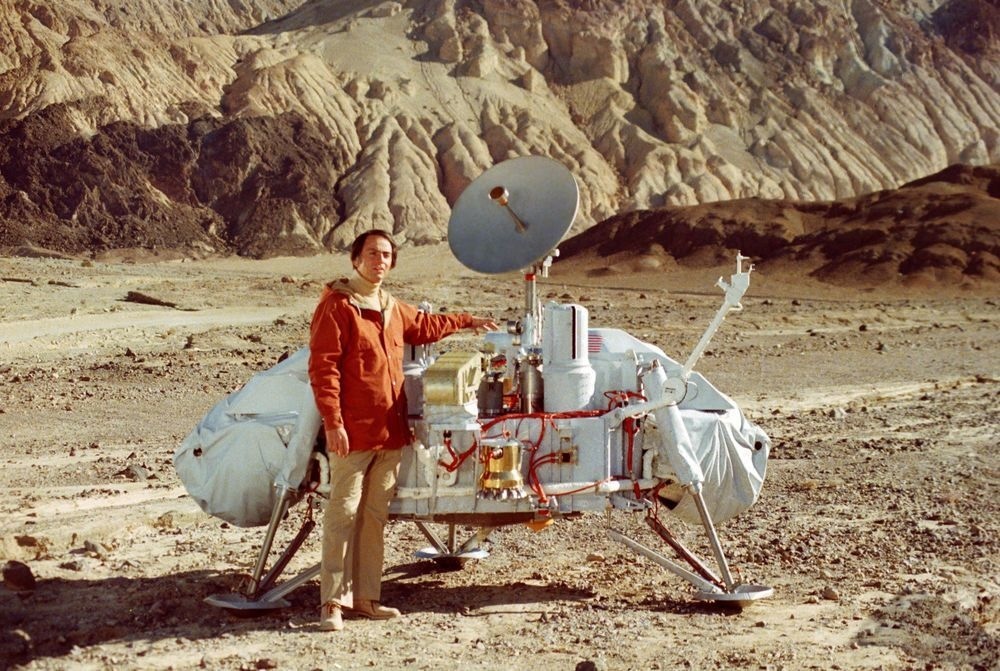
Carl Sagan stands by Viking Mars lander model in desert location. His call continues to ring true that "extraordinary claims need extraordinary evidence." (Image credit: NASA)
Difficult to interpret
Schulze-Makuch said it's true that with Mars sample return, scientists can apply even more of our most sophisticated methods, including those not yet available for a space mission.
But due to the long time period a soil sample is boxed up — both on the surface of Mars and during the long haul from Mars to Earth, "we would likely only find organic remnants of possible life, which would be difficult to interpret. This approach would work well for past life on Mars," Schulze-Makuch said, "but if our goal is to find extant life, then an in-situ mission is the way to go."
Viking results
"There is an inevitable tension in Mars sample return and the search for life," said Chris McKay, a space scientist at NASA's Ames Research Center in Silicon Valley, California.
"It is clearly the case that the best search for life would be done on samples in laboratories on Earth," McKay told Space.com. "But the prospect of bringing back a sample that may have Martian life in it gives many people pause and indeed is regulated, some might say prohibited, by the [United Nations] Outer Space Treaty."
Can we assume based on the Viking results that there is no life on the surface of Mars?
"My answer to this is yes and no," McKay responded. The Mars researcher underscores data gleaned by Viking in 1976, the NASA Phoenix lander discovery of perchlorate in 2007, as well as the analysis from the still-cranking Curiosity Mars rover that showed low levels of organics since landing in 2012.
"Most Mars scientists contend that the reactivity seen in the Martian soil is chemical and there is no surface biology now. So yes," McKay said. "But No. This view is not unanimous," he said, citing the case for extant life on Mars and its possible detection by the Viking labeled release experiment.
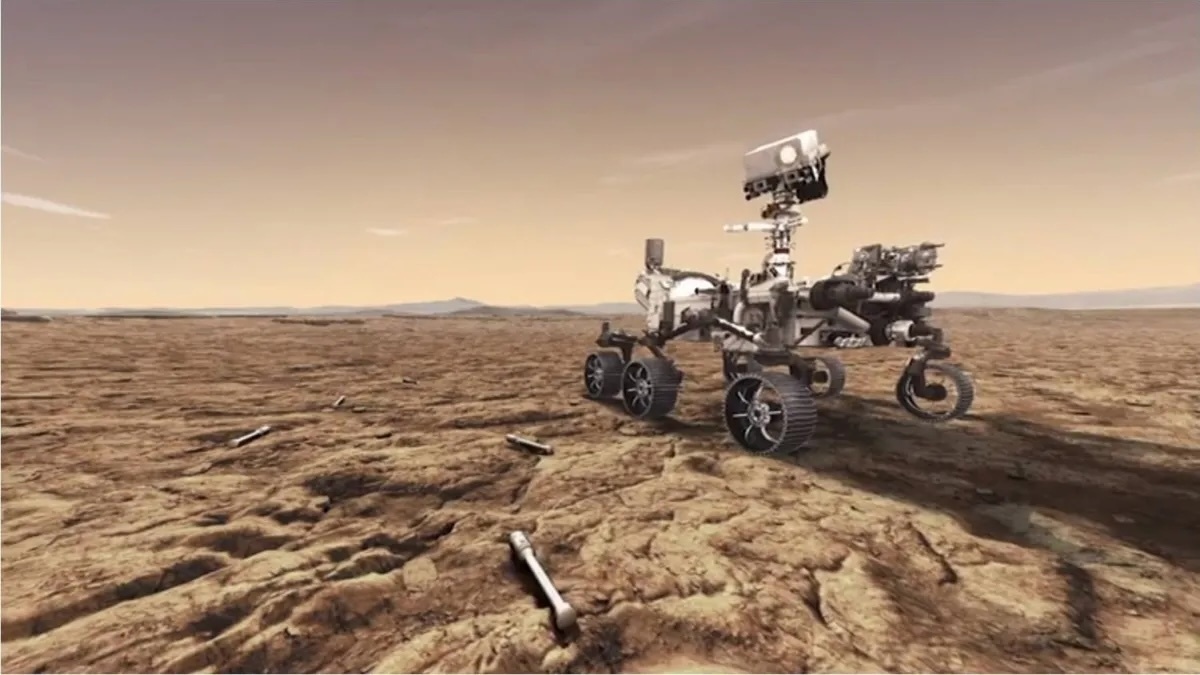
Now on duty at Jezero Crater on Mars, NASA's Perseverance rover has been a hunter-gatherer of prized specimens for later pick-up and delivery to Earth. (Image credit: NASA/JPL-Caltech)
Public opinion
NASA and the Committee on Space Research (COSPAR), an interdisciplinary scientific body, both consider any sample return from Mars as a potential biological risk, said McKay.
McKay said he has argued in print that "the standard of evidence to achieve scientific consensus is clearly lower than the standard that must be applied to the precautionary protection of the Earth. Life may not be the scientifically preferred explanation for the [Viking Labeled Release] results but it cannot yet be ruled out."
It may well be that public opinion or legal procedure, McKay said "will not support an assumption of no life on Mars for the purposes of sample or astronaut return to Earth without further analyses on Mars, regardless of the scientific consensus," he concluded.
Maturation pipeline
One potential NASA mission that has gained support is the Mars Life Explorer (MLE). This deep-digging lander would focus on a search for signs of currently existing Red Planet life.
MLE received a hearty endorsement from the most recent planetary science decadal survey, a report by the U.S. National Academies of Sciences, Engineering and Medicine that was issued in April 2022.
The instrument suite on MLE is designed to be "instrument agnostic," said astrobiologist and MLE's "science champion," Amy Williams, an assistant professor in the University of Florida's Department of Geological Sciences in Gainesville.
There are suites of instruments that already exist that could fly with the proposed MLE, or new instruments and technologies that are currently in the maturation pipeline that could be swapped in, Williams told Space.com. "There are very real opportunities for alternative and novel instruments to join the mission."
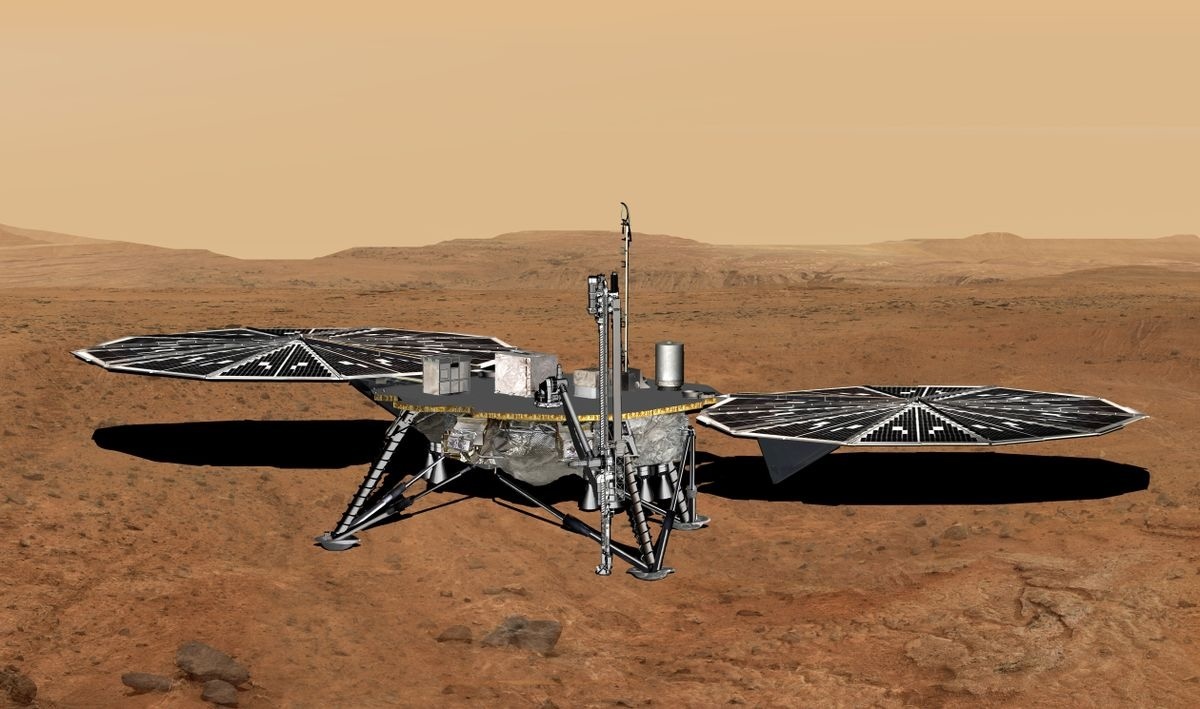
Concept art depicts proposed Mars Life Explorer to test for evidence of extant life on the Red Planet. (Image credit: Amy Williams)
Life screening
In the interim, research teams are pioneering the SOLID ("Signs Of LIfe Detector"), work carried out by Spain's Center for Astrobiology. There's also a Microfluidic Life Analyzer, or MILA, that has evolved at NASA's Jet Propulsion Laboratory.
Or how about building an instrument to be used during robotic ice mining missions, a high-tech device to seek Martian life thriving today?
That approach is underway by Steven Benner, founder of the Foundation for Applied Molecular Evolution and Firebird Biomolecular Sciences LLC.
In fact, the Agnostic Life Finding Association (ALFA) has been established, with both Benner and Jan Špaček, inventor of the Agnostic Life Finder (ALF), as leadership members.
"The only way to achieve the goal of ALFA Mars is to conduct the life screening of Mars before the first humans land there," the association's website declares.
So, in the end, it appears that the "whether or not" forecast about life on Mars remains foggy with patches of uncertainty.
Revisiting Carl Sagan's famous words that "extraordinary claims need extraordinary evidence," the take by astrobiologist Schulze-Makuch's is that "based on our current understanding of Mars, I think that the extraordinary claim is that Mars has no life and never had any life. We should finally go and find out!"
Quelle: SC
----
Update: 17.04.2024
.
Nasa: 'New plan needed to return rocks from Mars'
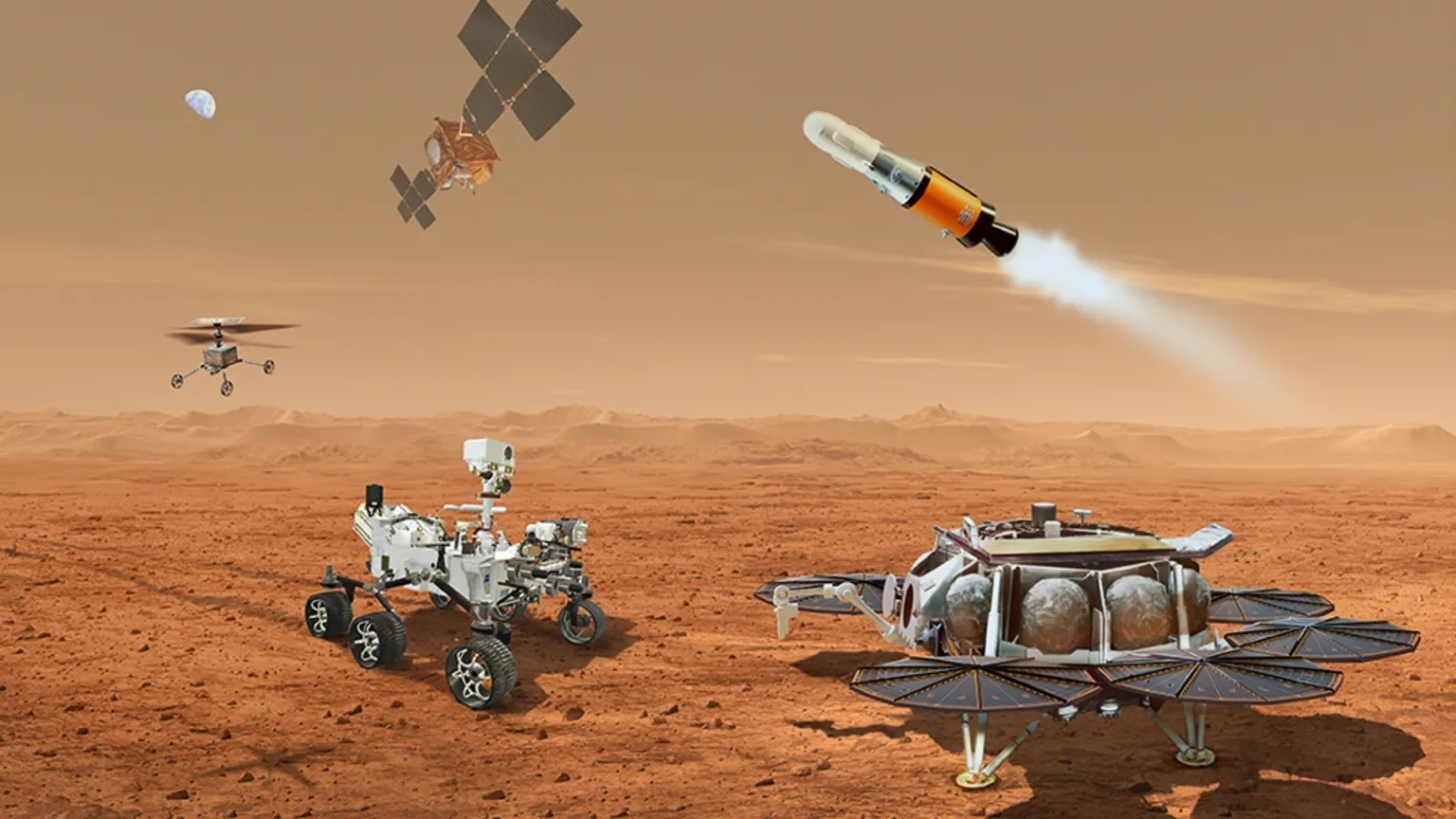
Returning Mars samples is an immensely complex undertaking that will take years
The quest to return rock materials from Mars to Earth to see if they contain traces of past life is going to go through a major overhaul.
The US space agency says the current mission design can't return the samples before 2040 on the existing funds and the more realistic $11bn (£9bn) needed to make it happen is not sustainable.
Nasa is going to canvas for cheaper, faster "out of the box" ideas.
It hopes to have a solution on the drawing board later in the year.
Returning rock samples from Mars is regarded as the single most important priority in planetary exploration, and has been for decades.
Just as the Moon rocks brought home by Apollo astronauts revolutionised our understanding of early Solar System history, so materials from the Red Planet are likely to recast our thinking on the possibilities for life beyond Earth.
But Nasa now acknowledges the way it's going about achieving the samples' return is simply unrealistic in the present fiscal environment.
"The bottom line is that $11bn is too expensive, and not returning samples until 2040 is unacceptably too long," Nasa administrator Bill Nelson told reporters in a Monday teleconference.
The former US senator said he would not allow other agency science missions to be "cannibalised" by the Mars project.
He is therefore seeking fresh thinking from within Nasa and from industry.
The Mars Sample Return, or MSR, programme is a joint endeavour with the European Space Agency (Esa).
The present architecture is already in play, in the sense that the rock samples to be returned home are in the process of being collected and catalogued on Mars today by Nasa's Perseverance rover.
A dedicated follow-up mission was due to be launched later this decade that would carry a rocket to the surface of the Red Planet.
Once loaded into this ascent vehicle, Perseverance's samples would then be blasted skyward to rendezvous with a European-built spacecraft that could catch them and head for Earth.
It was envisaged that roughly 300g of Martian material would land in a capsule in the western US state of Utah in 2033.
But an independent review that reported in September last year found faults with the way the mission design was being implemented. It doubted the schedule could be maintained and, even so, the cost was likely to balloon to somewhere between $8bn and $11bn.
In its response published on Monday, Nasa doesn't disagree with the assessment. The current architecture can be simplified somewhat but if the samples are to come home before 2040, a new approach is needed.
"We are looking at out-of-the-box possibilities that could return the samples earlier and at a lower cost," said Dr Nicola Fox, the director of Nasa's science directorate.
"This is definitely a very ambitious goal, and we're going to need to go after some very innovative new possibilities for design, and certainly leave no stone unturned."
Those new possibilities could include a smaller, simpler Mars rocket, she said.
Dr Fox told BBC News that Esa remained central to the endeavour. Indeed, it's likely Europe's significant contribution - the Earth Return Orbiter (ERO) - will still be launched, albeit at a slightly later date than currently envisaged, possibly in 2030.
Dr Orson Sutherland, Esa's Mars exploration group leader, said his organisation would meticulously review Nasa's response plan.
"Our priority remains ensuring the best path forward to achieve MSR's ground-breaking scientific objectives and lay the groundwork for future human missions to Mars," he said.
Mr Nelson emphasised that Nasa remained totally committed to MSR.
It needed, however, to fit within a sustainable budget envelope, which he described as somewhere between $5bn and $7bn.
The overwhelming scientific imperative behind MSR was underlined in recent days by the latest investigations of Perseverance.
The robot is working in a wide crater called Jezero, which looks to have held a large lake about 3.8 billion years ago - a highly promising scenario for the existence and preservation of microbial organisms.
Perseverance has been drilling and caching rocks that appear to have been laid down at the margin of the lake.
One of the rover's senior scientists, Prof Briony Horgan from Purdue University, said these samples were particularly exciting.
"Right now onboard Perseverance, we're carrying three samples of silica and carbonate-cemented rocks; and on Earth, both of those minerals can be fantastic for preserving ancient signatures of life," she told BBC News.
"We think it's possible that some of the samples are sandstones laid down in the ancient lake, but are still evaluating other origins as well. Either way, these rocks are the exact types of samples that we came to Mars to find, and we very much want to get them back to our labs on Earth."
Quelle: BBC
